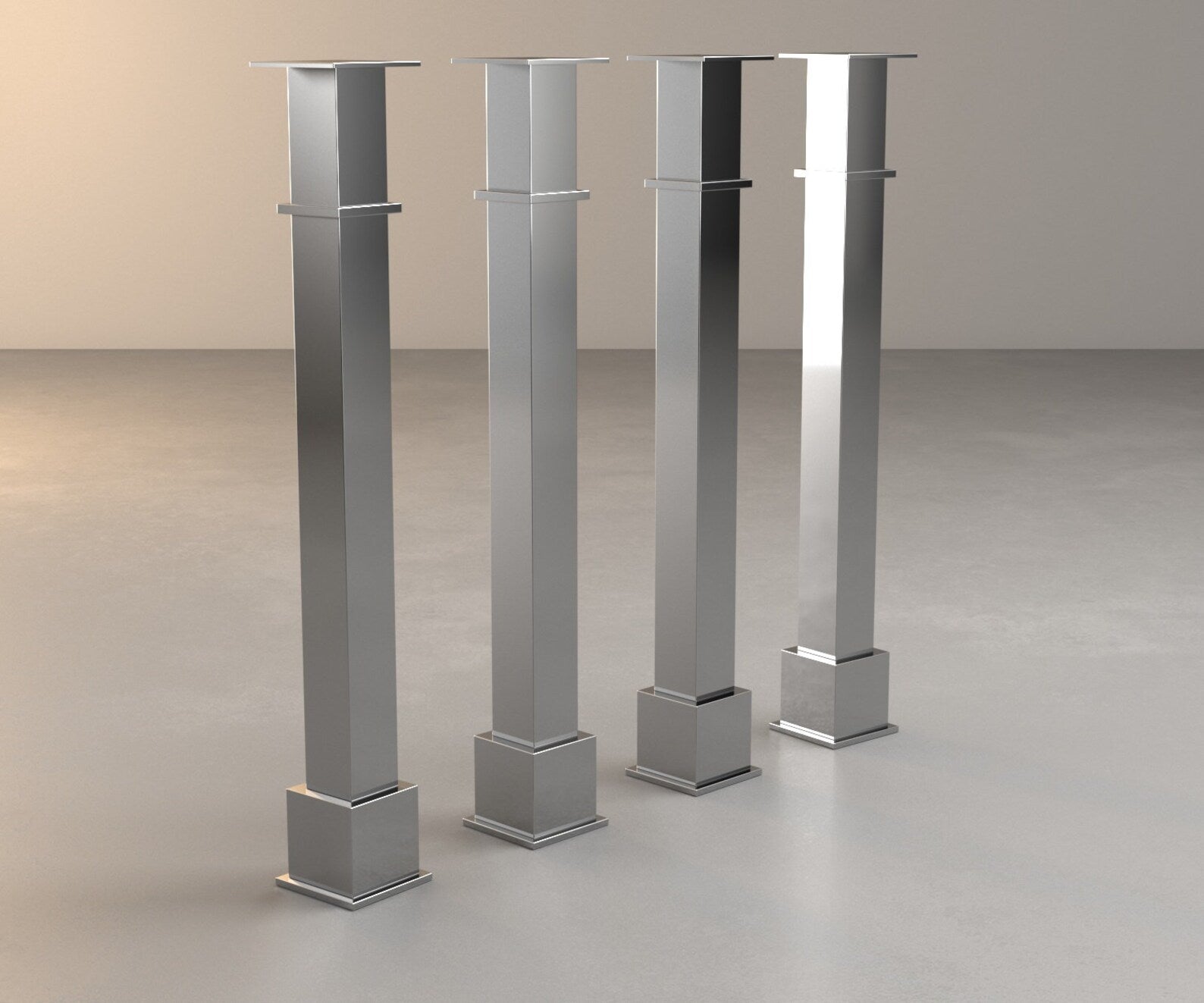Discover Affordable and Chic Solutions in Legs For Kitchen Island Updates
Discover Affordable and Chic Solutions in Legs For Kitchen Island Updates
Blog Article
An Overview to Selecting the Perfect Legs For Kitchen Island for Your Home
Picking the perfect legs for your cooking area island is a nuanced decision that influences both the functionality and visual charm of this main space. Elements such as elevation, products, and design play a crucial function in integrating your island with the overall kitchen style. In addition, understanding the significance of security and upkeep can dramatically affect your choice. As you think about these components, it comes to be noticeable that the right legs can transform not only the look of your kitchen area however likewise its functionality for several years ahead. What specific features should you prioritize in this option process?

Comprehending Kitchen Area Island Legs
When picking legs for a kitchen area island, it's vital to understand their practical and aesthetic functions in the total style. The legs act as an important assistance system, guaranteeing security and toughness for the island, which frequently operates as a work area, eating area, or gathering place. The choice of product and building and construction technique need to be durable adequate to withstand everyday usage and possible wear.
In addition to their structural obligations, legs add significantly to the island's visual charm. They can boost the cooking area's style, whether through conventional, modern, or diverse layouts. The elevation and proportion of the legs are likewise important factors to consider; they must harmonize with the island's counter top height while making sure comfy seating for those utilizing the room.
Moreover, the leg design can influence the overall flow of the kitchen. Open, airy leg styles can develop a feeling of agility, while strong, considerable legs might communicate a much more grounded and stable aesthetic - Legs For Kitchen Island. Understanding these visual and useful elements will direct property owners in making informed choices that complement their cooking area's layout and boost its functionality
Popular Styles and Materials
The selection of legs for a kitchen island encompasses a selection of prominent styles and materials, each offering one-of-a-kind features that can improve both functionality and aesthetic appeals. Among the most desired designs are contemporary, rustic, and standard. Contemporary legs often include streamlined, minimalist designs that stress simplicity and clean lines, making them excellent for contemporary kitchens. Rustic styles, on the various other hand, welcome natural components and commonly showcase reclaimed timber or troubled coatings, adding heat and charm to the room. Typical legs usually display ornate information and workmanship, enhancing traditional cooking area designs.

Height and Stability Factors To Consider

Stability is one more vital factor to consider. The legs of the kitchen island should give adequate assistance, making certain that the structure can hold up against daily use without wobbling or moving. Material option plays a considerable role in stability; steel legs, as an example, often tend to offer higher strength compared to timber. Additionally, making certain that the island is firmly secured to the floor or wall can improve stability, particularly for larger islands that may birth significant weight.
Matching Your Cooking Area Aesthetic
Picking the best legs for your cooking area island goes beyond performance; it also plays a considerable duty in the overall visual of the room. When selecting legs, take into consideration the design style of your kitchen area. For a modern appearance, sleek metal or minimal designs can produce a tidy, modern vibe. On the other hand, rustic or standard cooking areas typically gain a fantastic read from wood legs with intricate outlining or a distressed surface, boosting heat and character.
Legs that complement or comparison with your island's surface area and surrounding cabinetry can produce visual consistency or striking focal factors. Furthermore, consider the finish of the legs; matte, shiny, or textured finishes can significantly influence the general feel of the cooking area.
Setup and Maintenance Tips
Setting up kitchen island legs needs careful interest to detail to make sure both stability and aesthetic allure. Utilize a stud finder to situate wall studs if you are affixing the legs to a wall or utilizing braces for added assistance.
When safeguarding the legs, utilize high-quality screws and, if needed, timber glue for extra strength. For metal legs, make sure that you are using suitable supports and tools to avoid damages to your floor covering. It is a good idea to look for levelness after setup, making modifications as required to continue reading this avoid wobbling.
Clean the legs with an appropriate cleaner, preventing rough materials that may damage the surface. By following these installation and upkeep pointers, you can make certain that your cooking area island legs continue to be both aesthetically attractive and functional.
Conclusion
In conclusion, selecting the appropriate legs for a cooking area island demands cautious consideration of height, stability, and visual compatibility. By selecting appropriate materials and styles that straighten with the general kitchen area design, functionality can be boosted while keeping visual appeal. Correct setup and continuous upkeep better add discover this to the toughness and durability of the kitchen island. Ultimately, thoughtful leg option plays a crucial role in boosting both the usefulness and style of the cooking area space.
When choosing legs for a cooking area island, it's vital to understand their practical and visual roles in the total design. Open, ventilated leg designs can create a feeling of agility, while solid, significant legs may communicate an extra grounded and steady visual. The legs of the kitchen island must provide appropriate assistance, guaranteeing that the framework can withstand everyday usage without moving or wobbling.Setting up cooking area island legs requires mindful focus to information to ensure both stability and visual allure.In conclusion, selecting the proper legs for a cooking area island necessitates careful consideration of height, security, and visual compatibility.
Report this page